It’s Good That He Plays the Irish Whistle,
But It’s Even Better That He Makes Books for Children
 March 15th, 2011 by jules
March 15th, 2011 by jules
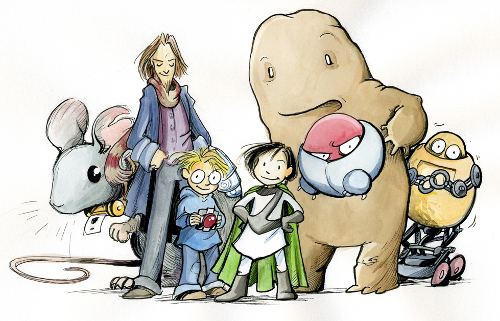
Ben Hatke, that is. He juggles, breathes fire, plays the Irish whistle, and attends to a growing family, as well as twelve chickens. He even homeschools them. The children. Not so much the chickens.
That’s according to his bio. But I’m glad he doesn’t stop there and that he’s turned his attention toward children’s lit. As a Virginia-based writer, artist, and graphic novelist (who studied for some time in Florence, Italy, which he addresses below), Ben has brought readers a new bad-ass female protagonist of children’s lit (even if she’s the only xx chromosome on the planet), and her name is Zita. Well, she’s but a wee girl, so somehow “bad-ass” is a bit much. Do-over: She’s super cool, quite clever, and very brave. And she’s the hero of Ben’s Zita the Spacegirl, a graphic novel for young children, published by First Second this past February.
The story is about a girl who lives on Earth but is transported to another planet when her friend is kidnapped by what can only be described (as the publisher does) as an alien doomsday cult. Making an attempt to rescue him, she must acclimate to the new world. She meets warrior robots, named H.A.M.B.O.s (Heavily Armored Mobile Battle Orbs); a rusty robot with the squeaks, named Randy; giant mice; mechanized, spider-like predators, out to catch Zita; a mysterious man, also from Earth, named Piper; a large, lumpy, friendly creature named Strong-Strong; and the Scriptorians, the planet’s first inhabitants, who intend to use Zita’s friend Joseph as a ritual sacrifice to prevent the destruction of their planet. Ultimately, Zita must make a huge sacrifice in order to help her friend.
 “With echoes of The Wizard of Oz,” wrote School Library Journal, “this charming, well-told story has a timeless ‘read to me’ quality that makes it perfect for one-on-one sharing. Adults will enjoy the subtle humor and inside jokes, and children will love intrepid Zita and her adventures. The art is simply delightful: a realistic heroine surrounded by a world of bizarre creatures.” Kirkus weighed in by calling it a debut that is “truly out of this world.” (Let’s humor them that buh-dum-ching pun, because I happen to think they’re right.) “Hatke’s skill shines,” they wrote. “His characters are richly imagined and portrayed.” Betsy Bird also covered this one in February: “We’ve finally hit the point where girls can explore not just alternate worlds but alternate planets as well.” And, last but not least, Travis at 100 Scope Notes weighed in, too: “Well paced and illustrated, with a story that never loses the reader, this is likely to become a well-liked member of your graphic novel collection.”
“With echoes of The Wizard of Oz,” wrote School Library Journal, “this charming, well-told story has a timeless ‘read to me’ quality that makes it perfect for one-on-one sharing. Adults will enjoy the subtle humor and inside jokes, and children will love intrepid Zita and her adventures. The art is simply delightful: a realistic heroine surrounded by a world of bizarre creatures.” Kirkus weighed in by calling it a debut that is “truly out of this world.” (Let’s humor them that buh-dum-ching pun, because I happen to think they’re right.) “Hatke’s skill shines,” they wrote. “His characters are richly imagined and portrayed.” Betsy Bird also covered this one in February: “We’ve finally hit the point where girls can explore not just alternate worlds but alternate planets as well.” And, last but not least, Travis at 100 Scope Notes weighed in, too: “Well paced and illustrated, with a story that never loses the reader, this is likely to become a well-liked member of your graphic novel collection.”
Recommended age range from the publisher? (Note that I don’t even normally point these things out, since it always depends on the child.) “8 to 12.” But just yesterday my five-year-old wanted me to go get, right at that moment, the sequel to the book. She seems to be under the impression I can conjure these books up from thin air, but I digress. My point is that this is a well-executed graphic novel for the younger set, something we don’t see so often.
Ben’s here for some cyber-coffee this morning, sharing some art and telling us a bit more about how Zita came about and what he’s up to next. His words below are scattered with some early Zita watercolors he did as sketch cards, as well as some doodles. Without further ado, here’s Mr. Hatke, who is playing his Irish whistle over coffee. You just can’t quite hear it.
On What’s it Like to See His First Full-Length Graphic Novel Published:
It’s pretty amazing, actually. I spent so much time and energy worrying about making the best book I could make that I never thought much about what it would be like to see it in people’s hands.
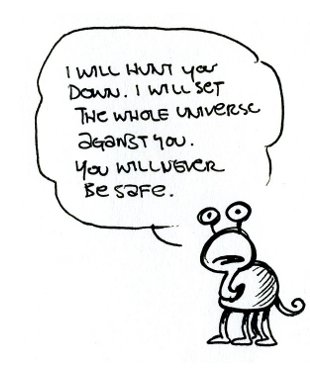 Recently, I had my first speaking/signing date at Politics and Prose and, when I walked in, they had the books displayed in the front of the store and, well, it was the first time I had approached the book that way — so far away from my little desk at home.
Recently, I had my first speaking/signing date at Politics and Prose and, when I walked in, they had the books displayed in the front of the store and, well, it was the first time I had approached the book that way — so far away from my little desk at home.
A week before the book was released, I found myself in a Barnes and Noble in D.C., poking around the shelves of what they call “Middle Grade Fiction,” which is a frumpy way of saying “the fun stuff.” There was this young girl there; she was maybe ten, and she was reading a book and trying hard not to laugh outloud and failing. I thought, “I bet she would like Zita the Spacegirl,” and I happened to have a copy in my bag. It took me awhile to work up the nerve (it was somehow easier when I noticed her mom was nearby), but I finally offered her a copy of the book. She was delighted! An instant fan. And I thought, “this is what it’s all about: giving a story you worked hard on to a kid and seeing their eyes light up.”
So, I figure, as long as I can keep on doing that, my work-life will be alright.
On His Road to Publication:
 I started making Zita web comics as an exercise in storytelling. I would try to get an entertaining story or idea across in three pages or less. At the same time, I was doing a few short stories for the Flight Anthologies, and the online community for Flight really helped me develop my skills. I can hardly say enough good things about Flight.
I started making Zita web comics as an exercise in storytelling. I would try to get an entertaining story or idea across in three pages or less. At the same time, I was doing a few short stories for the Flight Anthologies, and the online community for Flight really helped me develop my skills. I can hardly say enough good things about Flight.
Eventually, I started receiving queries from smaller publishers about a Zita book, and I started working on a proposal. First Second was a young imprint, and they seemed to be putting out some really quality books, so I emailed an editor there and told her I had done stories for Flight and would she mind if I sent something in, even though they weren’t really taking submissions. She said go for it, so I sent her the Zita pitch.
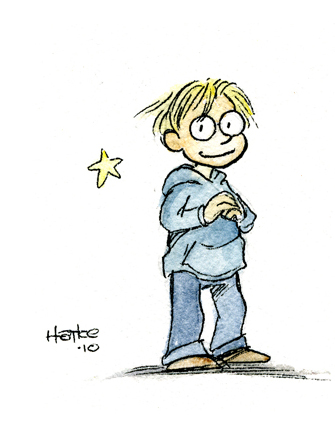 That editor was Kat Kopit, and she stuck with me through the long road from my rough story idea to this final book. I had never had an editor before. Good grief, what would I have done without her? We also moved three times while I worked on the book (once to Italy and back), and she managed to keep up with the Rambling Hatkes through all of that.
That editor was Kat Kopit, and she stuck with me through the long road from my rough story idea to this final book. I had never had an editor before. Good grief, what would I have done without her? We also moved three times while I worked on the book (once to Italy and back), and she managed to keep up with the Rambling Hatkes through all of that.
On His Studies in Florence:
That was an adventure and more! By 2006, I had already been doing freelance illustration for a couple of years, but I had started to feel like I had reached this point where I either had to take my drawing up a level or find something else to do.
So, I actually went to one of my old college professors for advice and told him I was thinking of applying to an architecture program, and he said, “don’t do it!” — and urged me to look into the Charles Cecil Studios in Florence. Learning there is like stepping back in time, and they focus on a very traditional and academic style of drawing and painting. I loved it. It was really only a couple of months, but they were jam-packed with learning.
The other side of the story, though, is that my wife’s father was born and grew up in this tiny village in the Apennine mountains of Tuscany. The village was a good three-hour train ride from Florence, but it gave us a house to stay in. The catch was that the house, which had belonged to Anna’s grandmother, had been essentially vacant for twenty years. We worked for nine months to revive that little house. We had two girls at the time, and the first night was very cold and the woodstove was broken and there were no beds and we all just slept huddled together in our coats. I went to sleep thinking, “what have I done to my family?” But it ended up being one of the best years of our life.

On His Preferred Medium:
That depends on what I’m doing.
For comics, I keep things really simple — pigma micron pens on laser printer paper. I do a bit of brushwork with india ink, but I never, ever use crowquill pens. Crowquill pens! Blech!
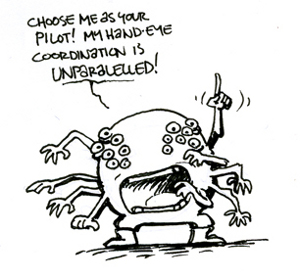 I color comics in photoshop with a Wacom Cintiq. For non-comics illustration, I like ink and watercolor, and one day I would really like to try watercoloring a whole graphic novel.
I color comics in photoshop with a Wacom Cintiq. For non-comics illustration, I like ink and watercolor, and one day I would really like to try watercoloring a whole graphic novel.
On Process:
Getting the story right was actually a big challenge, and I went down the wrong path several times to the point where I had drawn many many pages and then had to throw them out. But I learned a little bit along the way.
My ideal method seems to be to stumble and search and bang my head against a wall until I find the perfect 12-point outline. Each point is one or two short paragraphs. It’s a very loose structure, leading to an ending point and certain turns along the way that I feel confident about. Within that structure, I scribble about twenty pages at a time and let all kinds of surprising things happen. One of my big tricks is that I design page spreads rather than individual pages, and I keep an eye especially on the first panel on the left-hand page and the last panel on the right-hand page.
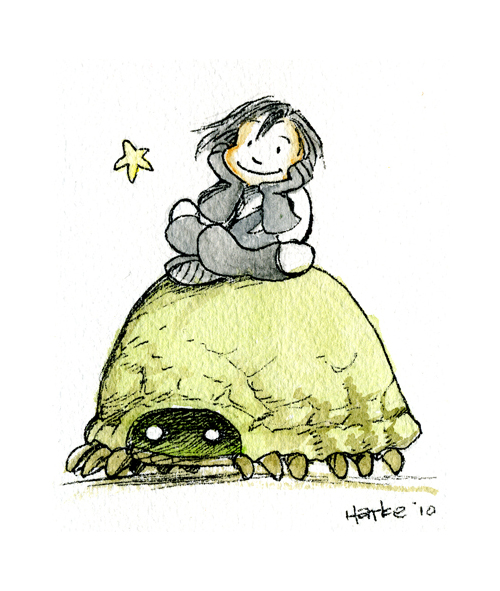
These thumbnail pages look like the scrawlings of a madman filled with weird little notes to myself. They’re almost illegible. And all those pages eventually cycle down to the girls’ art table for scrap paper.
If the story is entertaining and moving along, I draw and ink the batch of twenty and then move on to the next batch. When I have a whole book of inks, I go back and edit (which can be painful).
Finally, when I have a whole book, I queue up This American Life and move onto coloring.

On Zita’s Further Adventures:
The first book all took place on one planet (two, if you count Earth). The second book has some actual space travel, as well as more robots and the introduction of a character who will teach Zita a lot about making her way in the big, mean universe.
On What’s Next:
I have plans for a third Zita book, and I’m also slowly chipping away at a set of illustrations for a small press edition of G.K. Chesterton’s poem, “The Ballad of the White Horse.” (I have a soft spot for Chesterton). {Here’s} my most recent…picture:
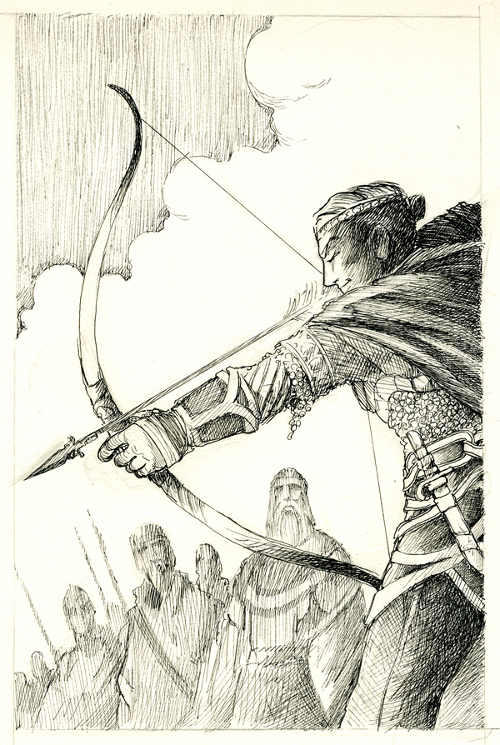
And beyond that, I guess time will tell!
Below are some more pieces from Ben’s most recent portfolio. Many thanks to him for visiting, and may Zita continue to rock on with her bad self.
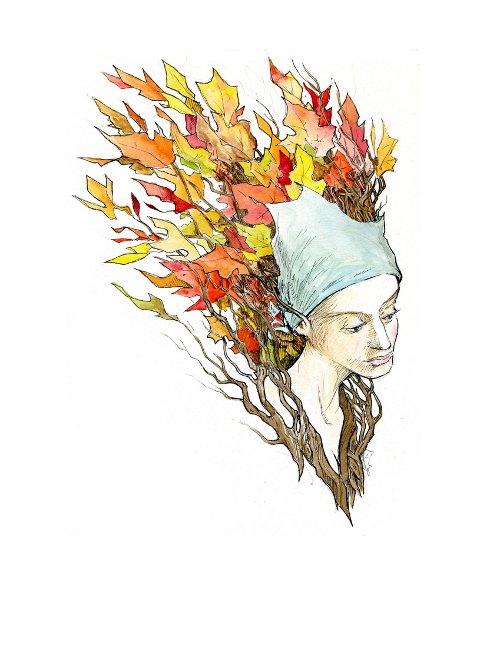
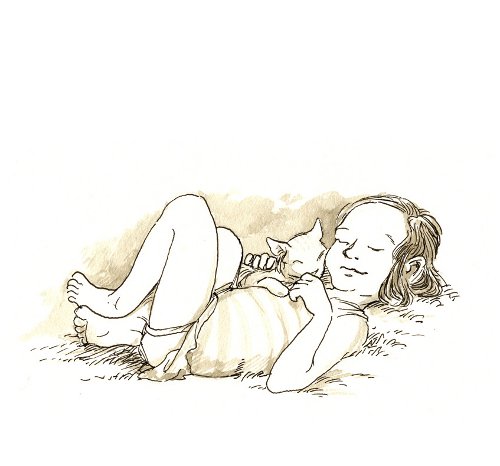
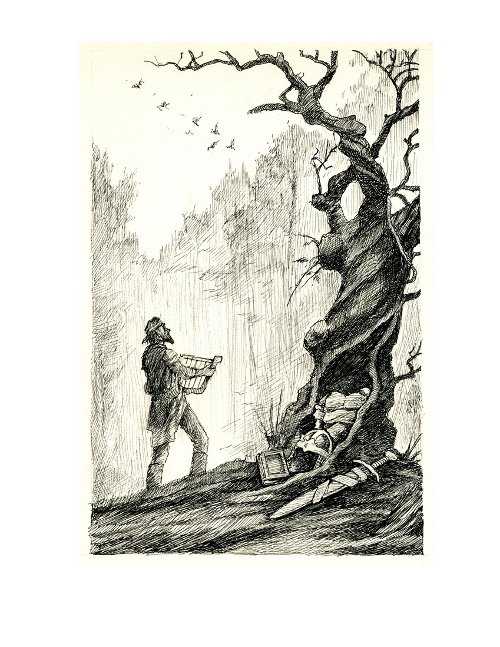
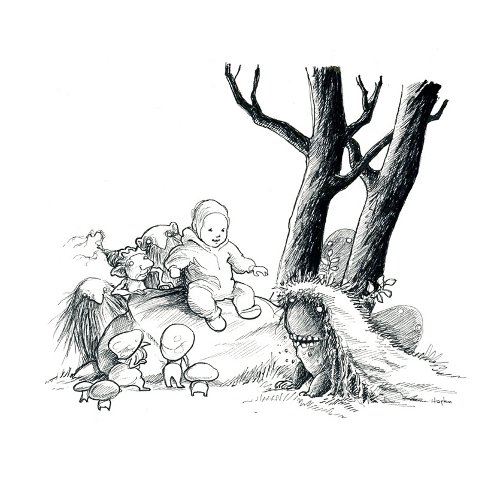

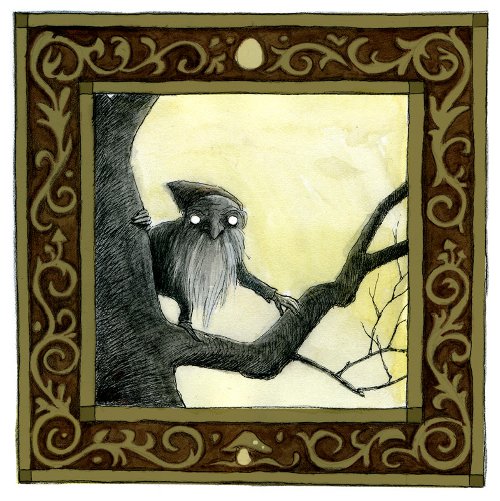
ZITA THE SPACEGIRL. Copyright © 2010 by Ben Hatke. Published by First Second, New York. All rights reserved.
All images © 2011 Ben Hatke and used with permission.

Wow~love this stuff. New to me. Thanks, Jules.
Jane
THIS was a GIFT. All these gorgeous, lovely panels.
I’m so excited that there will be more Zita stuff, and more from Ben Hatke — I just love the way he draws, and — wow. Reminds me of the first time I read Sandman — I was hooked just that fast.
::happy sigh::
Wow. Especially love the archer and the man and tree! Amazing how such beautiful images emerge from all of those precisely-placed lines. Clara would love Zita, too.
Thanks for posting!
[…] A great interview with Ben Hatke, author of Zita the Spacegirl: http://blaine.org/sevenimpossiblethings/?p=2096 […]
Man, that is some FIIINE draftsmanship, and I love his style! Thanks for roping him in!
Thanks for the post! I’ve enjoyed following Ben’s career over the years. And MAN did we love Zita at our house!
[…] you missed this 2011 7-Imp post, let me quickly summarize for you: Zita’s first set of adventures—Ben Hatke’s […]
[…] to be a part of this blog tour, because I love these graphic novels. In fact, you can read why here (2011) and here (2012). Those are 7-Imp visits with Ben in which he shares art and even such things […]